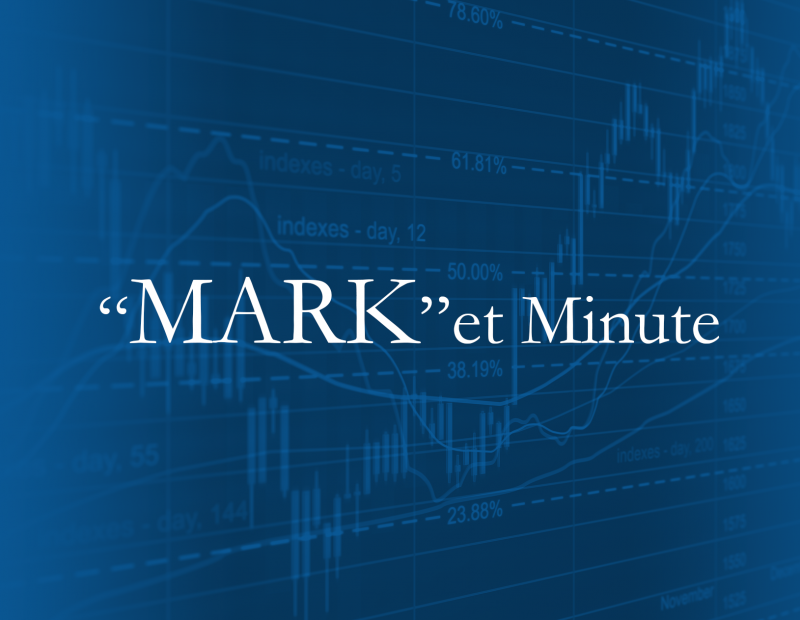Investment Commentary –November 17th, 2016
Market Indices as of Market Close November 17thh, 2016
Dow 18,868 (8.28% YTD)
S&P 2,176 (6.51% YTD)
NASDAQ 5,294 (5.73% YTD)
Global DOW 2,436 (2,033 week low/high 2,489)
10-year Treasury 2.07 (1.32 52 week low /2.35 high)
Gold 1,225 ($1,053 52 week low /high $1,384)
Oil $46.08 ($34.06 52 week low /high $53.62)
Dow snaps 7-day win streak, retreats from record
The Dow Jones Industrial Average closed lower on Wednesday, snapping a seven-day winning streak and retreating from record territory. The breather comes after the biggest weekly rally in years, which was fueled by fiscal stimulus hopes. The S&P 500 SPX, -0.16% closed 3.43 points, or 0.2%, lower at 2,176.97.
The Dow Jones Industrial Average DJIA, -0.29% declined 54.30 points, or 0.3%, to 18,868.76. But a rally in tech stocks on Wednesday led the Nasdaq Composite COMP, +0.36% into positive territory, with the index ending the session up 18.96 points, or 0.4%, at 5,294.58.
Yellen says Fed may hike interest rates ‘relatively soon’
Doing little to dispel expectations of a hike as early as next month, Federal Reserve Chairwoman Janet Yellen on Thursday said an interest-rate hike could come “relatively soon.”
Ahead of an appearance before the Joint Economic Committee, Yellen said progress in the labor market has continued and that economic activity has picked up from the modest pace seen in the first half of this year.
Inflation, while still below the central bank’s 2% objective, has increased somewhat, Yellen said.
Yellen added the central bank continues to expect that the evolution of the economy “will warrant only gradual increases in the federal funds rate over time to achieve and maintain maximum employment and price stability.”
Current policy was only “moderately accommodative” because the federal funds rate currently is only somewhat below estimates of the neutral rate, Yellen added.
U.S. consumer prices post largest gain in six months
U.S. consumer prices recorded their biggest increase in six months in October on rising gasoline costs and rents, suggesting a pickup in inflation that potentially clears the way for the Federal Reserve to raise interest rates in December.
The Labor Department said on Thursday its Consumer Price Index increased 0.4 percent last month after rising 0.3 percent in September. In the 12 months through October, the CPI advanced 1.6 percent, the biggest year-on-year increase since October 2014. The CPI increased 1.5 percent in the year to September.
Last month’s increase in both the monthly and year-on-year CPI was in line with economists’ expectations.
Underlying inflation, however, remained moderate. The so-called core CPI, which strips out food and energy costs, climbed 0.1 percent last month after a similar gain in September. That slowed the year-on-year increase in the core CPI to 2.1 percent from a 2.2 percent rise in September.
The Fed has a 2 percent inflation target and tracks an inflation measure which is currently at 1.7 percent.
The firming inflation backdrop and labor market that is approaching full employment are likely to encourage the U.S. central bank to raise borrowing costs at its Dec. 13-14 policy meeting.
U.S. jobless claims hit 43-year low as labor market tightens
Nov 17 – The number of Americans filing for unemployment benefits fell to a 43-year low last week, pointing to a rapidly tightening labor market that could allow the Federal Reserve to raise interest rates next month.
Initial claims for state unemployment benefits dropped 19,000 to a seasonally adjusted 235,000 for the week ended Nov. 12, the lowest level since November 1973, the Labor Department said on Thursday.
Claims for the prior week were unrevised.
Claims have now been below 300,000, a threshold associated with a healthy labor market, for 89 straight weeks. That is the longest run since 1970, when the labor market was much smaller.
Economists polled by Reuters had forecast first-time applications for jobless benefits rising to 257,000 in the latest week.
THIS DAY IN FINANCIAL HISTORY: First Federal Reserve Bank Opens
On this day in 1914 the Federal Reserve’s first bank is officially opened. The Federal Reserve was created as a unifying body of the nation’s banks. Before the Fed the nation’s banks were all independent. After the Fed was established it provided the nation’s banks with universal interest rates and other tools to keep banking crises from emerging. Although the Fed was intended to be a passive system in recent years it has taken a more active role in the nation’s monetary policy.
The views presented are not intended to be relied on as a forecast, research or investment advice and are the opinions of the sources cited and are subject to change based on subsequent developments. They are not a recommendation, offer or solicitation to buy or sell any securities or to adopt any investments.
http://www.marketwatch.com/story/dow-snaps-7-day-win-streak-retreats-from-record-2016-11-16
http://www.econedlink.org/economic-calendar.php?month=11
http://www.marketwatch.com/story/yellen-says-fed-may-hike-interest-rates-relatively-soon-2016-11-17
http://www.reuters.com/article/us-usa-economy-idUSKBN13C1IW?feedType=RSS&feedName=businessNews
http://www.reuters.com/article/us-usa-economy-consumer-idUSKBN13C1J2?feedType=RSS&feedName=businessNews


Leave A Comment